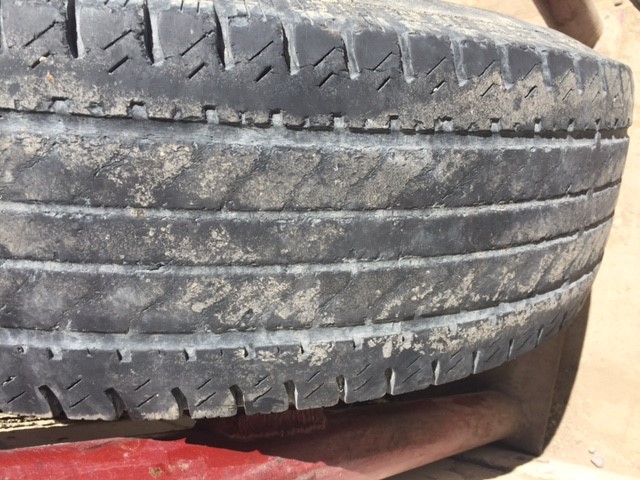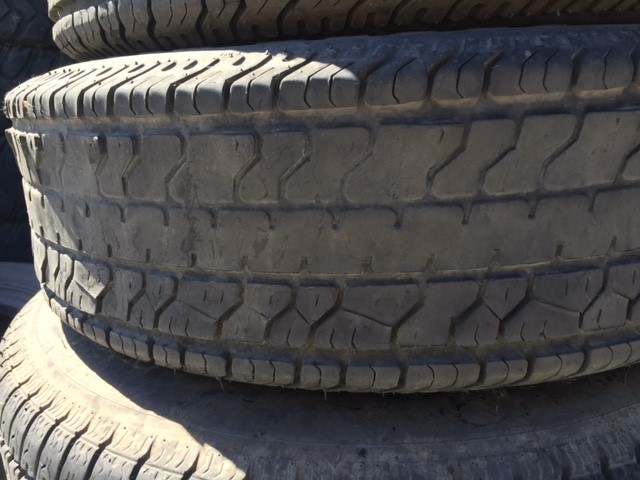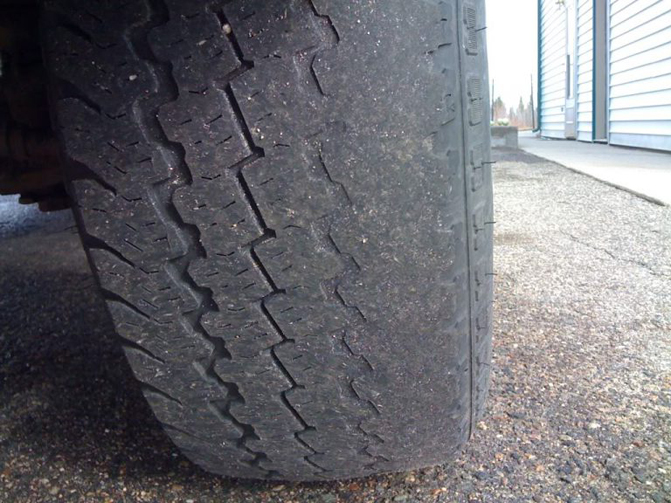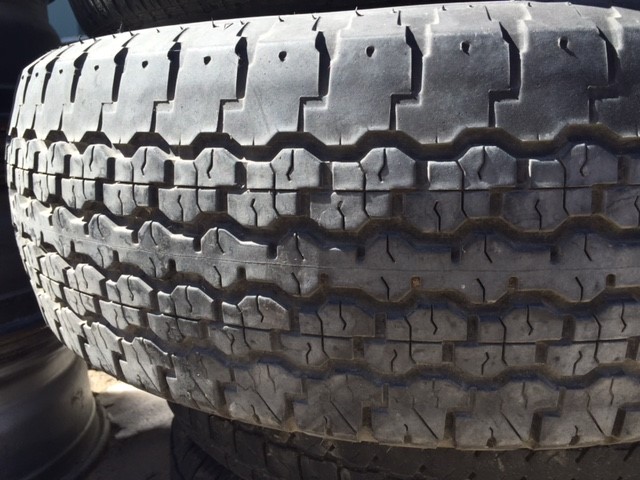Do you need to buy new tires for your car? Here are 7 easy ways to tell.
Maybe you got a flat tire that one time, or maybe you wondered if winter tires are really necessary (they are, depending on where you live). Often, though, with the exception of situations like these, many drivers forget about their tires until there’s an obvious issue.
Considering how important the condition of your tires is, you would seriously benefit from keeping an eye on your tires and knowing when you need to replace them. Below we look at 7 ways to tell if the time has come for you to buy new tires for your ride.
1. They’re Worn Out
It doesn’t take a ton of detective work to determine if your tires are worn out. Essentially all of today’s tires actually have tread-wear indicators. These raised bars that live in the indentations between tread blocks let you know when you’ve reached the generally recognized legal wear minimum for your tires (1.6mm or 2/32”). Once these bars are level with the tread of your tires, you know it’s time to replace them.
Why, you ask? Basically, at the point the tread depth is at 1.6mm, a tire’s ability to maintain traction in wet (not to mention snowy) conditions has been seriously undermined. In fact, many companies recommend replacement at closer to 3-3.2mm for summer/all season tires and 4-5mm for winter tires. Winter tires often have a second set of indicators to show if your tires have the grip to truly qualify as winter tires, or if they are worn down to the level where they have essentially become all-season tires and are less effective in the snow.
Hot Tip: To figure out where indicators are on your tires, there are usually arrows, logos or “TWI” molded into the tire’s sidewall.
2. They’re Cracked
These tires with center wear are also cracked — definitely time for to buy new tires.
Like people, rubber hardens and dries out as it ages. New tires have oils and chemicals meant to slow this process, but over time, they tend to evaporate, leak out or just break down. Things like UV exposure, repeated tire dressing or excessive heat-cycling (from under-inflation or track use) help to speed up the deterioration of tires.
Try getting down close to your tires and looking for tiny cracks in either the sidewall or tread blocks as well as bigger cracks between the treads. Also, check for cracks in the sidewall near the tire bead. Very minor/cosmetic cracking is typically allowed, from a safety standpoint, but could be a sign of things to come. If you’re seeing anything deeper, it’s time to buy new tires.
3. They’re Old
These old tires display what’s known as patch wear, clearly a sign they need to be replaced.
In Canada (and the U.S.), all street-legal tires are required to have a production date code, showing the week and the year, stamped into their sidewall. This 4-digit code is usually included in the DOT serial code on one side of the sidewall (keep in mind: the DOT serial code is often on both sides of the sidewall, but the production date code is usually only on one side). A code that reads “3615” would mean the tire was made in the 36th week of 2015. Fun!
As discussed above, a certain amount of breakdown happens over time with tires, and even if you can’t see it, it’s happening and it’s compromising your tires’ effectiveness. Auto industry experts tend to recommend replacing your tires every 6 to 10 years, and getting routine inspections to monitor their wear in that timeframe.
4. Their Traction is Diminished
Camber wear can result in greatly diminished traction. These ones here look like they’ve never been rotated.
You might think we already covered this in the tread depth section, but a vehicle’s tires may appear to be A-OK in terms of tread depth, age, and rubber dryness, but still have compromised traction. This is especially common in light-duty truck and passenger car tires with high tread-life indexes, particularly in wet conditions.
What happens is, the tread compound hardens from either heat cycling or simply tire design or construction. This hardening undermines the grip of the tire. If you’re noticing your tires look fine but don’t feel as though they’re gripping the road like they once were, you should probably ditch ‘em.
5. You or a Mechanic Find Out-of-Round/Shifted Belts
If you feel a vibration or shimmy/shake as you drive, it’s easy to assume it’s just a balance issue, but that may not be the case. Not all tires are created equal or perfect. Individual tires may have issues such as manufacturing defects or perhaps they’ve suffered damage from rogue road debris or shoddy streets/potholes.
If your tires are out of balance, the result can be reduced stability and unnecessary component wear and tear, which is a pain in and of itself. But if you feel those vibrations when you drive, especially at very low speeds, you should ask that a mechanic inspect for shifted belts when checking/realigning the balance.
The “shimmy/shake” at very low speeds can be a sign of a shifted belt, which is a structural failure within the tire. If this issue isn’t dealt with in a timely manner, you risk tire failure, especially in high-speed situations like highway driving. This could mean not only damage to your car, but danger to you and your passengers as well, since you could potentially experience loss of control while driving.
If you or your mechanic find major out-of-round conditions or shifted belts, buy new tires immediately.
6. They’re Damaged
Tires with cup wear like these should really just be turned into swings and here’s an easy way to do so.
Obviously, a tire that can’t hold its air is grounds for replacement, but there are other, less obvious, offenders to look out for as well. Gouges, abrasions/scuffing to the tread or sidewall and deep cuts that don’t create an actual hole in the tire may still mean you need to replace it. Internal damage to the tire(s) from being driven while low on air (or even while flat) or a puncture to the tire in an area that can’t be patched may also be cause for replacement. Think of this as a preventative measure to avoid getting a flat or even worse, experiencing truly dangerous tire failure.
7. You’re Just Jonesing For an Upgrade
Don’t feel obligated to wait for something bad to happen to your rubber before you buy new tires. Your current tires may be fine, but if you want more handsome wheels or tires to give your ride a sharper look or higher performance potential, go for it! Between high-end tires and stylish replacement wheels (don’t even get us started on wheels and rims) you have a ton of options that will result in a more personalized and, frankly, better ride.
For some of the best tire brands you can buy right now at some of the best prices, CLICK HERE and get 5% off $399 or more by using the coupon code TBAFF05.
Main photo: BigstockPhoto.com / ja images
The Wise Guide team writes about things we think you’ll like, introducing you to great products, services and special deals. We do have affiliate partnerships, so we may earn revenue from the products and services you buy.












